The Early Schools of Indian Buddhism Series
How the Theravada school dealt with doctrinal points from other schools
Part 12
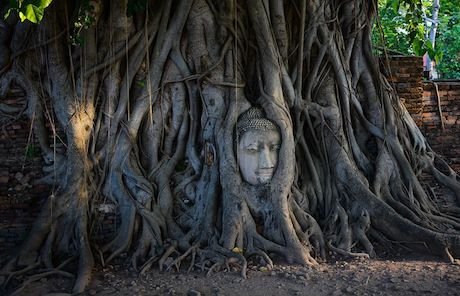
In Part 8 of this series, we looked at the schools that ‘participated’ and ‘did not participate’ in the Third Council of Buddhism, according to the Kathavatthu, the text that deals with the ‘points of controversy’ from schools other than Theravada. As was mentioned in Part 8, the Kathavatthu is classified as a canonical text in the Theravada tradition, as being part of the Abhidhamma Pitaka, although the text has been expanded up until the second century AD, as evidenced by the ‘late’ schools that are mentioned in the text. Likely, the text started out small and was expanded as more controversial viewpoints from other schools were encountered and dealt with as such.
The Kathavatthu includes a total of 217 points of controversy, divided into twenty-three chapters, where each point is associated with one or more schools, although a few are not assigned to any particular school at all. Due to a large number of doctrinal points covered, I have divided this Part 12 of the series into seven chapters, with each chapter covering one or more of the schools and their doctrinal points of ‘controversy.’
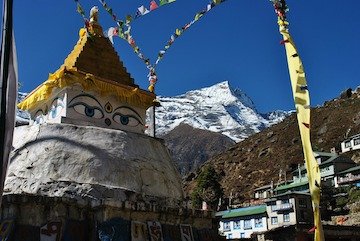
The total number of points of ‘controversy’ for each school covered in this chapter:
Kassapikas: 1
Mahasanghikas: 26
Overview of the chapters that cover the various schools:
- Chapter 1 — Vajjiputtakas, Sammitiyas, Sabbatthivadins
- Chapter 2 — Kassapikas, Mahasanghikas
- Chapter 3 — Andhakas
- Chapter 4 — Pubbaseliyas
- Chapter 5 — Aparaseliyas, Rajagirikas, Siddhatthikas, Gokulikas, Bhadrayanikas, Mahimsasakas
- Chapter 6 — Uttarapathakas
- Chapter 7 — Hetuvadins, Vetulyakas, Not assigned to any school, No points assigned
In this post we’ll be looking at the schools for Chapter 2 — Kassapikas, Mahasanghikas
The given name for the schools in this post follow the Theravada name designation as mentioned in the Kathavatthu text, followed by the Sarvastivada name designation by Vasumitra in his Samaya-bhedoparacanacakra text. The Kathavatthu is divided into twenty-three chapters. Each point of controversy’s headline listed here starts out with the Kathavatthu reference of book (in Roman numerals) and point, i.e., IX. 4 means book nine, point four.
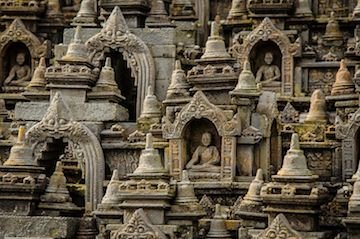
Section 1 — Kassapikas (Kasyapiya) (1 point of controversy)
This school was also called Suvarsaka (good year), the founder’s name which was of the Kasyapiya family. The followers of the monk named Kassapa, obviously not the Maha-Kassapa of the First Council. The Kasyapiya school was known by three other names, Sthaviriya, Saddharma-varsaka = the flower of the authentic teaching (by Bhavya from the Sarvastivada school), and Suvarsaka (by Taranatha). Although they split from the Sarvastivada school, they seem to have been more in agreement with those of the Sthaviravada school, which is probably the reason why they were also called Sthaviriya.
Point 1 — I. 8. Of Some of the Past and Future as still Existing
That (i.) some of the past exists, some does not; (ii.) some of the future exists, some does not.
The Theravadin by his questions seeks to break down the opinion, held by those seceders from the Sabbatthivadins known as Kassapikas, that the past survives, as presently existing, in part.
Section 2 — Mahasanghikas (Mahasamghika) (26 points of controversy)
The members of this school rejected the last book of the Vinaya Pitaka (parivara: a sort of summary and index of the preceding Vinaya books), the six sections of the Abhidhamma, the Patisambhidamagga (a book in the Khuddaka Nikaya), the Niddesa (another book in the Khuddaka Nikaya dealing with detailed expositions), and selections from the Jataka tales (birth stories of the Buddha). The school was so called owing to the vast number of its followers, which made a great assembly (mahasangiti).
Point 1 — I. 2. Of falling away
That an Arahant can fall away from Arahant ship.
Because of such statements in the Suttas as ‘liability to fall away, and the opposite, these two things, monks, are concerned with the falling away of a monk who is training’; (AN i. 96) and ‘these five things, monks, are concerned with the falling away of a monk who now and then attains emancipation,’ (AN iii.173) certain sects in the Order incline to the belief that an Arahant can fall away. These are the Sammitiyas, the Vajjiputtiyas, the Sabbatthivadins, and some of the Mahasanghikas. Hence, whether it be their view or that of others, the Theravadin, in order to break them of it asks this question.’
‘Falling away’ is, more literally, declined, the opposite of growth. ‘“Falling away” is twofold—from what is won, and from what is not yet won. “The venerable Godhika fell away from that emancipation of will which was intermittent only” (SN i.120), illustrates the former. “See that the reward of your recluse-ship fall not away for you who are seeking it, (while yet more remains to be done!)” (MN i.271) illustrates the latter.’

Point 2 — X. 2. Of the Path and Bodily Form
That the physical frame of one who is practicing the Eightfold Path is included in that Path.
Those who, like the Mahimsasakas, Sammitiyas, and Mahasanghikas, hold that the three factors of the Path:—supremely right speech, action, and livelihood—are material, are confronted with the contradiction that, since the factors of the Path are subjective, they imply mental attributes lacking in matter.
Point 3 — X. 3. Of Path-Culture and the Senses
That one may develop the Path while enjoying the fivefold cognitions of sense.
Some, like the Mahasanghikas, concerning the Sutta: ‘When he sees an object with the eye, he does not grasp at it in the idea,’ (By the mind adverting to an external object) hold to the view stated above. The Theravadin argues that, if this is so, either the Path developed is of a worldly nature, or the developer’s sense-experience must be of the nature of the Path. However, neither is possible, because sense-cognition is worldly, and has not Nibbana as its object.
Point 4 — X. 5. Of Sensations and Ideation
That the five kinds of sense-consciousness as such are co-ideational (sabhoga).
, Here again, the Mahasanghikas, for instance, carelessly interpret the Teacher’s words, quoted in the previous. They hold them to mean that ideation accompanies the five kinds of sensations as such because sexual ideas are generated by immoral thoughts.
Point 5 — X. 6. Of Two Codes of Morals
That one who is engaged in the Path is practicing a double morality.
From such passages in the Word as ‘When a man is established in virtue he is gifted with wisdom,’ (SN i.13, SN i.165) some, like the Mahasanghikas, hold that, inasmuch as the virtuous person is developing the Path which is not of the world, with a morality that is of the world, he must, at the moment of realization, be possessed simultaneously of both a worldly and an unworldly morality. The argument begins by showing that each morality would involve two separate sets of mental processes.

Point 6 — X. 7. Of Virtue or Morality as Automatic (acetasikam)
That virtuous conduct is automatic (and not a property of consciousness).
It is held by some, like the Mahasanghikas, that when there has been moral conduct, even though it has ceased, there is an accretion of virtue, and hence the doer becomes virtuous. The argument is analogous to that on giving as not mental (VII. 4).
Point 7 — X. 8. Of Virtue as conforming to Thought
That virtue does not proceed in adaptation to (Literally, roll along after, in accordance with) thought.
This is merely a pendant to the previous discourse. This is similar to point 7: ‘Of Virtue or Morality as Automatic,’ so the likely adherents are Mahasanghikas.
Point 8 — X. 9. Of Growth through Observance
That virtue grows through (the mere fact of) being undertaken.
Here, from a careless interpretation of the verse in the Word, beginning—‘By planting pleasant parks and woods,’ wherein it is said— ‘Merit does grow continually,’some, like the Mahasanghikas, hold that virtue grows naturally when once the virtuous life has been undertaken, accumulating independently of the mind’s action.

Point 9 — X. 10. Are Acts of Intimation Virtue?
That acts of intimation are moral acts.
Some, like the Mahasanghikas and Sammitiyas, thinking that ‘bodily intimation is karma of deed, vocal intimation is karma of speech,’ believe that such acts have a moral quality. However, intimation (as gesture or speech) is a material matter, while morality or virtuous conduct is not so, but is a deliberate (i.e., mental) act of abstinence.
Point 10 — X. 11. Of Non-Intimation as Immoral
That acts not intimating (a moral purpose) are immoral.
Some, like the Mahasanghikas, hold this view, based on the idea of possible accumulation of demerit (in the past), and on the fact that moral precepts may be broken at the dictates of another.
Point 11 — XI. 1. Of Three Facts about Latent Bias
(i.) That latent bias is unmoral (indeterminate).
That potential bias in its seven forms is (i.) unmoral, (ii.) without moral or immoral motive, (iii.) independent of mind, is an opinion held, for instance, by the Mahasanghikas and the Sammitiyas. They allege that it is not right to say that the average man, while moral, or unmoral consciousness is going on, has latent bias, since the motive or condition of such consciousness cannot cause latent bias (to manifest itself), nor is such consciousness conjoined with any form of bias.
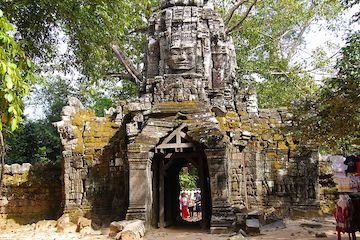
Point 12 — XI. 2. Of Insight
That it is wrong to say ‘he has insight’ of one who, though he has banished nescience, has thoughts not conjoined with insight.
Some, like the Mahasanghikas, hold that one who, having banished spiritual ignorance by Path-insight, is experiencing ordinary cognitions by way of sense, cannot at the time be said to ‘have insight,’ since Path-consciousness is then not active. The criticism reveals their ineptitude in the notion of what an (Ariyan) person is, and also the propriety of ascribing insight to one who, having acquired insight (has it always potentially, if not actually).
Point 13 — XI. 5. Of the Force of the Magic Gift (iddhi)
That one who has the gift of magic potency might live on for a kappa (on earth).
The interval, kappa, here means a ‘great’ cycle (mahakappa), not its fourth part, the ‘incalculable cycle’ (asankheyyakappa), nor the mere ‘life-term’ (ayukappa). Now some, like the Mahasanghikas, hold this view because they have not thoroughly grasped the real advantage lies in the development of the steps to magic potency. The opponent, knowing that his vital principle or functioning is but the result of karma, has to deny that his vital functions are determined by spiritual power (iddhi). All that magic potency can effect is to avert things that would bring about an untimely death.
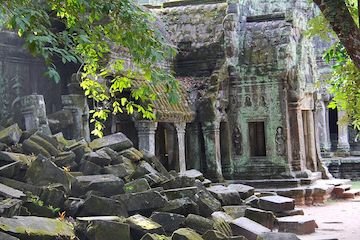
Point 14 — XII. 1. Of Self-Restraint
That self-restraint is (positive) action (karma).
This is a view held, for instance, by the Mahasanghikas, and based on the Sutta: ‘When he sees an object, hears a sound, etc., he grasps, etc., at the general characters thereof,’ (AN ii.16) etc. They hold that both self-restraint and want of self-restraint amount to overt action, or karma. In our doctrine, it is volition that constitutes karma. And it is argued that just as volition, proceeding by way of deed, word, and thought, gets the name of action of body, speech, and mind, so, if self-restraint be action, that self-restraint, proceeding by way of sense-control, would get the name of visual karmas, auditory karmas, etc. This, as not warranted by the Suttanta, the opponent rejects till the fifth sense is mentioned. Here he stumbles at the ambiguity of kaya: ‘sentient skin-surface’ and ‘intimating body.’
The Sutta quoted is concerned with the presence and absence of self-restraint, not of karma; hence it is inconclusive.
Point 15 — XII. 2. Of Action
That all action (karma) entails moral result (vipaka).
Some, like the Mahasanghikas again, hold this view, basing their opinion on the Sutta quoted below. Now whereas the Master, without any qualification, spoke of volition as moral action (karma), the argument here shows that only good or bad volition as entailing moral result was meant, and that volition which is morally indeterminate is without moral result. The Sutta quoted is inconclusive, since it refers to the experience of results in actual life or lives, given the necessary conditions.
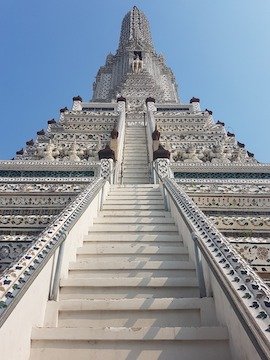
Point 16 — XII. 3. Of Sound as Result of Karma
That sound is a result of karma.
Here again some, like the Mahasanghikas, from carelessly interpreting such passages as, ‘He by the doing, the accumulating, the augmenting, the abundance of that karma, is gifted with the voice of a Brahma god,’ have adopted this view. The argument shows that ‘result of karma’ is a term applying to mental states only, which have been transmitted by karma but does not apply to material things. The retinue, for instance, attending a Superman is not a vipaka (moral result), or specific result of karma.
But the pleasure derived from the well-being of this kind is a moral result (vipaka). Vipaka is essentially a subjective phenomenon, subjective experience, emotional and intellectual. Sound, an object, is something ‘other,’ or external. The importance of speech-sounds for thought doubtless provoked the exceptional position claimed by the heterodox for sound. Sadda means both sound and word; hence, without a qualifying context, sadda means as much vocal sound as sound in general.
Point 17 — XII. 4. Of the Sense-Organs
That the sense-organs are results of karma.
Here again, it is Mahasanghikas belief that, because the sense-organs have arisen through the doing of past actions, therefore they are results (understood as subjective or mental). Of them the sixth, or co-ordinating, a sense may at times be such a result, but not the others.
Point 18 — XIV. 1. Of the Mental Consecutiveness of Good and Bad
That a basis (root or conditioned state) of bad thought is consecutive to a basis that is good, and conversely.
That which is right cannot directly and immediately follow after what is wrong, nor conversely. Such reciprocal consecutiveness is anomalous. Some, however, like the Mahasanghikas, hold that, since one can both like and then dislike the same thing, therefore there has been, in such a case, reciprocal consecutiveness. Good and bad thoughts cannot occur consecutively during the stages of javana (apperception) in the same process of cognition since each course of good or of bad thought entails a distinct preliminary ‘adverting’ of consciousness.

Point 19 — XV. 1. Of Correlation as specifically Fixed
That one phenomenon can be related to another in one way only.
Some, like the Mahasanghikas, hold that if anything is correlated to another as its moral condition or motive (hetu), it is not correlated to that other by way of (subject-)object, or of contiguity, or of immediate succession. Alternatively, again, if anything is correlated to another as its object, it is not correlated to that other by way of contiguity, or immediate succession.
Point 20 — XV. 2. Of Reciprocal (annamanna) Correlation
That whereas actions are conditioned by ignorance, we may not stay that ignorance is conditioned by actions.
This view, held, for instance, by the Mahasanghikas, is met by the opposite doctrine that there is reciprocal conditioning obtaining between ignorance and actions, and so on.
Point 21 — XV. 6. Of Decay and Death
That the decay and death of spiritual things (lokuttara, supra-mundane or transcendental) is itself spiritual.
Decay and death are not predetermined, and therefore do not come under the categories ‘mundane,’ ‘supra-mundane.’ The Mahasanghikas and others do not grasp this salient feature.
Point 22 — XVI. 1. Of Control
That one can control the mind of another.
Some, like the Mahasanghikas, hold that the attainment of power and authority in the world is only genuine if it includes the power to control the consciousness of others.
To know (read) the thoughts of another was one of the supernormal pieces of knowledge, but control or influence over another to prevent corruption were not assumed for it.
Point 23 — XVI. 2. Of Assisting Another’s Mind
That one can help the mind of another.
The Commentary merely ranges this under the preceding discourse. Similar to point 22, and classified the same as Mahasanghikas.
Point 24 — XVIII. 9. Of the Eye and Seeing
That we see visible objects with the eye.
Here, judging by the text—‘When he sees an object with the eye’—some, like the Mahasanghikas, hold that the sentient surface in the eye is that which ‘sees.’
In the quoted passage the method of naming a necessary instrument is followed, as when we say ‘wounded by a bow,’ when an arrow inflicted the wound. So the words ‘see with the eye’ are spoken of seeing by visual consciousness.
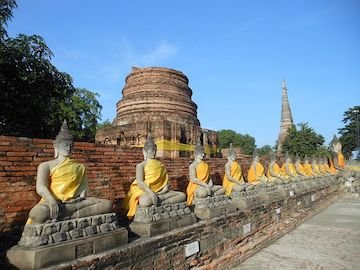
Point 25 — XXI. 3. Of Certain Fetters
That Arahantship is won without a certain ‘Fetter’-quantity being cast off.
Some—for instance, the Mahasanghikas—hold this view concerning the Fetters of ignorance and doubt, for the reason that even an Arahant does not know the whole range of Buddha-knowledge.
Point 26 — XXI. 6. Of All-pervading Power
That the Buddhas persist in all directions.
Some, like the Mahasanghikas, hold that a Buddha exists in the four quarters of the firmament, above, below, and around, causing his change of habitat to come to pass in any sphere of being.
In the next article, we will discuss how the Theravada school dealt with the doctrinal points from other Buddhist schools, as recorded in their Katha-vatthu text — Chapter 3 — Andhakas.

- Introduction to the history of Buddhist Councils and Schools-Part 1
- The Buddhist Councils — Who, when, where, and why?Part 2
- The Buddhist Councils — Who, when, where, and why?Part 3
- The History Of ‘Northern Buddhists’ of Sarvastivada - Part 4
- The History Of ‘Northern Buddhists’ of Sarvastivada - Part 5
- Buddhist schools at the time of the First ‘Maha-Kasyapa’ Council at Rajagaha. - Part 6
- Buddhist schools at the time of the First ‘Maha-Kasyapa’ Council at Rajagaha. - Part 7
- Buddhist schools at the time of the Third ‘Moggaliputta Tissa’ ‘Asoka’ Council - Part 8
- Buddhist schools at the time of the Fourth ‘Vasumitra’ ‘Kanishka’ Council at Jalandhar. - Part 9
- Buddhist schools in the 5th Century A.D. according to the Chinese pilgrim Fa-hsien -part 10
- Buddhist schools in the 7th Century A.D. according to the Chinese pilgrim Yuan-Chuang - Part 11
- How the Theravada school dealt with doctrinal points from other schools -The Katha-vatthu — Chapter 1 - Part 12
- The Ten Stages of the Mahayana Bodhisattva Path-The Two Preliminary Stages-Part 1
- The Ten Stages of the Mahayana Bodhisattva Path-The Two Preliminary Stages-Part 2
- The Ten Stages of the Mahayana Bodhisattva Path-The Two Preliminary Stages-Part 3
- The Ten Stages of the Mahayana Bodhisattva Path-The Two Preliminary Stages-Part 4
- The Ten Stages of the Mahayana Bodhisattva Path-The Two Preliminary Stages-Part 5
- The Ten Stages of the Mahayana Bodhisattva Path-The Two Preliminary Stages-Part 6
- The Ten Stages of the Mahayana Bodhisattva Path-The Two Preliminary Stages-Part 7
- The Ten Stages of the Mahayana Bodhisattva Path-The Two Preliminary Stages-Part 8
- The Ten Stages of the Mahayana Bodhisattva Path-The Two Preliminary Stages-Part 9
- The Ten Stages of the Mahayana Bodhisattva Path-The Two Preliminary Stages-Part 10
- The Ten Stages of the Mahayana Bodhisattva Path-The Two Preliminary Stages-Part 11
- The Deathless In Buddhism
- The "Timeless" Teaching-Being Beyond Temporality
- The Nine Successive Cessations In buddhist Meditations - Part 1
- The Nine Successive Cessations In buddhist Meditations - Part 2
- The Nine Successive Cessations In buddhist Meditations - Part 3
- The Twelve Links Of Dependent Origination
- THINGS to DEVELOP and THINGS to AVOID
- The First Noble Truth
- The Second Noble Truth
- The Third Noble Truth
- The Fourth Noble Truth
- 10 Fold Path Series
- EATING MEAT — WHY THE BUDDHA WAS NOT A VEGETARIAN
I will flag comment spam at 1% strength. If you keep on spamming my post, I will flag you at 100%. I don't care if you have limited English abilities, write a couple of sentences about this article, no copy-paste, please. I will flag: one sentence comments, links to your blog and begging for up-votes and follows. Also, I will flag comments that have nothing to do with my blog's article. I will also check your comment section to see if you have been comment spamming on other blogs.
Hi @reddust. I found intriguing the Point 22. I always have been under the impression that control of others limits the freedoms of the controlled ones. In my frame of mind, this cannot be good. Now, controlling the mind (or consciousness) seems to be a form of control in steroids. Can you clarify this for me?
The wrong view of this school was to think that the function of iddhi was able to control the mind of others. Of course, in reality, it is to instruct others to liberate their mind per Theravada right view @macusantoniu26
Instructing to liberate minds sounds much better!
You might reword it as direct knowledge transferral.
You keep your mind focussed in a certain way, a position of focus.
And then you hold the students perception in that focus.
Or, (same thing, different words) you hold the space around the student in a certain vibration.
and hope that the student picks up and keeps focus on that vibration.
Resonance?
Sorta... It is resonance, because you have two wave forms, but the implied meaning is back to front.
Because the teacher is more firm in his focus, and the teacher has more power, he is able to push his state onto the student. And then you hope the student can keep the focus.
Usually it is repeated a bunch of times. Siggghh, a bunch of times... but that's teaching.
You see the world as you do because of your focus.
If you have practiced meditation, you have probably noticed that your view of the world has changed.
Change the focus, change the understanding.
@reddust Very informative sharing. My question will be that way. What is the Role of Women in Buddhism? As far as I know, Buddhism believed in gender equality, but in time Buddhist communities formed patriarchal structures that could not be basically based on Buddhist teachings. While Buddhist women are clearly dependent on men, some nuns consider it a humble practice.
The role of women in Buddhism is dependent on the culture and has always been limited. During Buddha's time, it was revolutionary for a woman to take the spiritual path and Buddha and his cousin Ananda had to debate the newly formed Buddhist community for women to join their sangha. It was and still is dangerous for women, we are the weaker sex and vulnerable to physical attacks and must be protected, which is hard to do when meditating alone out in the woods or going on alms rounds as most did back in Buddha's time. The Buddhist Nuns have more rules to follow than the Buddhist monks, and their monasteries have to compete for funds as well. @turkishcrew you can read Psalms Of The Sisters, my first teacher a Korean Monk, I called him Sunim gave me my first Dhamma lessons using the Psalms of The Sisters. Korean Buddhism takes good care of their nuns, Theravada Buddhism no longer has nuns, their order died out and can only be resurrected by a living Buddha, per the rules of the Vinaya. Tibetan Buddhism never did have an active order of Nuns, but their system did have spiritual women teachers. In China and other Asian communities, there are still active and healthy Buddhist Nunneries.
There is a growing movement to bring back Theravada Nuns order, but they will have to use a different Vinaya and nuns from a different tradition, which is controversial, to say the least, and Tibetan Buddhism also have nuns, but they have to use a different Vinaya, you can read about it here.
So they do not believe that their death was predestined for a particular date? BTW that is quite a impressive stairway. Thanks @reddust
@enjoywithtroy, the lifespan of a particular person is not predetermined, but some Buddhist believed it was and this is the wrong view per the Theravadans doctrine, these points of controversy are all wrong views.
before reading your blog .i was unknown to buddhist's traditional history and significance. but now i am part of a ancient traditional historical chain of incident, because i have learned about them,,,,,,,
in Islam there are schools of fiqh, kalam schools and tasauf ,,
Broadly speaking, the prevailing current for schools of jurisprudence is 4
there are 2 for the school of kalam, and for the schools of thought there are also many, the most famous for when ii is the School of Judaism al bagdadi ,,
these schools sometimes have mutual controversies
It is really nice to see you more often by steemit and sharing all your knowledge about Buddhism. Whenever I read your post you can see the great effort you put into them
hundreds of years ,working hard, the buddhist intellectuals has made a position of their religion on this world. it's a great exaple of succes after hard working. however they have gifted us a nice and peaceful religion or ryles of life. we all are happy to introduce and go through it.... and you are doing a great job @reddust,,, dear
This stuff is so difficult to translate.
We, in the west, cannot even assume the person has had the experiences associated with deep meditation, nor can we even speak of chi without feeling the reader is thinking we are a crack-pot.
In this... simple seeming sentence, it is rather important to know all the meanings of karma.
It is true that the sense-organs were built over many lives in this universe. Many lives training the focus to be on certain sets of frequencies.
Karma, in this sense, being seen as continued energy. Energy patterns you are not through with. But, there is no good/bad involved with this particular focus and continued energy. It just is... but it is also one of the things that keeps you tied to the wheel of time.
Looking forward to more of this series.
This kind of game is very exciting. https://goo.gl/Dd9394
it's really a great quote
everybody should maintain their religion